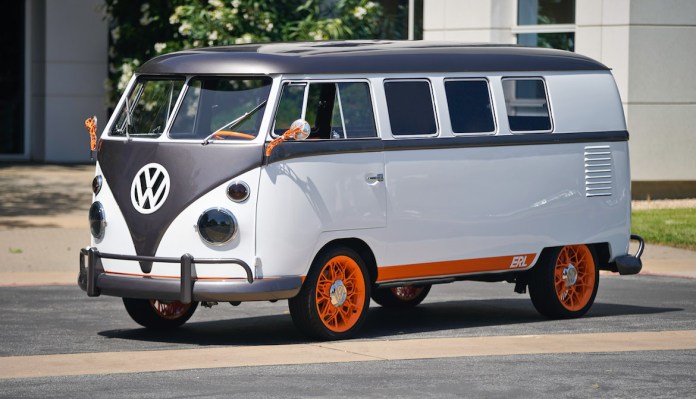Volkswagen and Autodesk teamed up to celebrate the 20th anniversary of one of the automaker’s biggest R&D facilities with an iconic vintage VW Microbus that looks retro on the outside but packs a ton of tech on the inside, including an electric powertrain and significant weight savings afforded through use of “generative design.”
That’s the design practice in which designers use software to autonomously create (or “generate,” get it?) designs based on input of their desired performance requirements, the materials they have available or what they’re using in terms of manufacturing.
In this case, one of the key requirements for this retrofit was saving space and weight to make the Microbus more energy efficient. That’s what led to things like the almost organic-looking wheel design, which offers 18% weight savings versus standard wheels. Similarly, the steering wheel, rear-view side mirror mounts and back bench supports sport similar, root-structure looks, like it was grown more than manufactured.
[gallery ids="1853239,1853238,1853237,1853236"]
In addition to light weight, strength and ease of construction, designers on the project say they hope these results of generative design generally invite touch more often from users of the vehicle, which is not typically a result of utilitarian support structure design for your average car.
Engineers and designers from both Autodesk (which has also done generative design collaborations with GM and NASA JPL previously) and Volkswagen’s Innovation and Engineering Center California worked together on this project, but it’s just a show car, so don’t expect to be able to buy any tree vans anytime soon.
